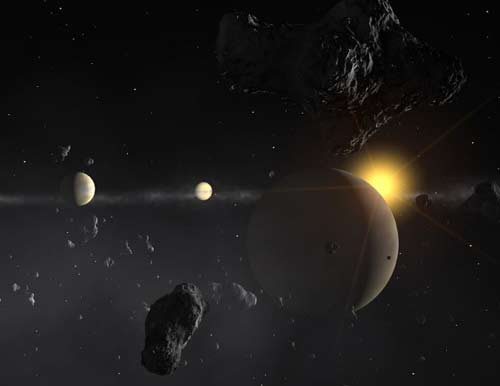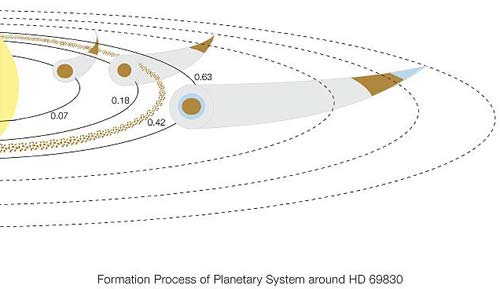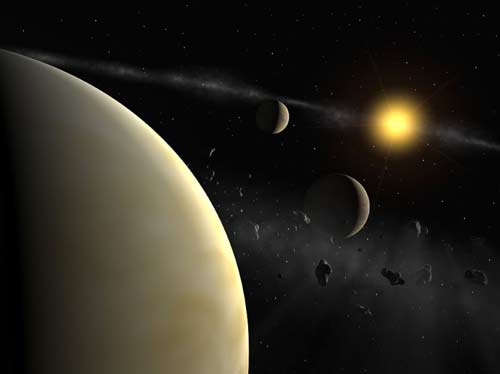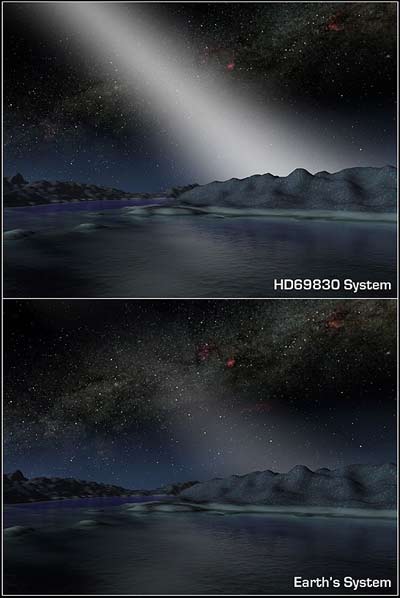On May 18, thanks to observations made with the HARPS spectrograph telescope located in La Silla, Chile, a group of European scientists has discovered the most Sun-like planetary system ever found.
This planetary system consists of a star designated HD 69830, which has three planets orbiting around it.
 |
| Star HD 69830 with three orbiting planets (Source: Solstation) |
The star HD 69830 is nearly the same size as the Sun, located 41 light-years away from Earth in the constellation Puppis, with an apparent magnitude of 5.95, making it visible to the naked eye.
After a period of research, scientists discovered the presence of three companion planets orbiting the star HD 69830, with orbital periods of 9 days, 32 days, and 197 days, respectively.
 |
| Three companion planets orbiting star HD 69830 (Source: Solstation) |
Due to the orbital speeds of these planets being only 2-3 meters per second (equivalent to the walking speed of a person, about 9 km/h), these changes are very difficult to detect with ordinary spectrographic telescopes.
For this reason, scientists have referred to HARPS as “the world’s most precise planet-hunting machine.”
According to research findings, the planet closest to the star HD 69830 is primarily composed of rock, the middle planet consists of gas and rock, while the outermost planet may be formed from icy materials, contains water, and could potentially support life.
 |
 |
| Source: Solstation |
















































